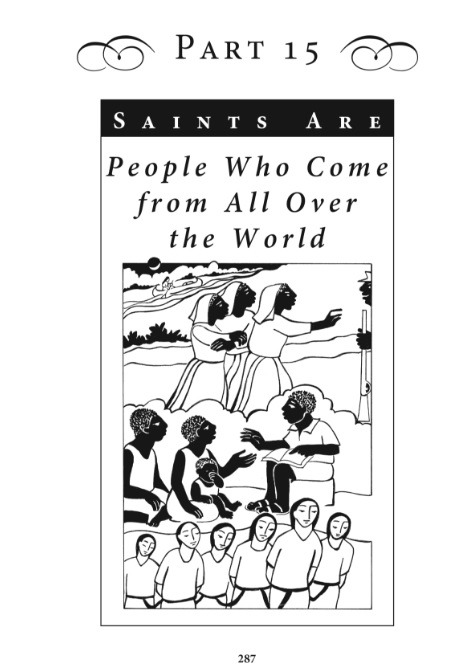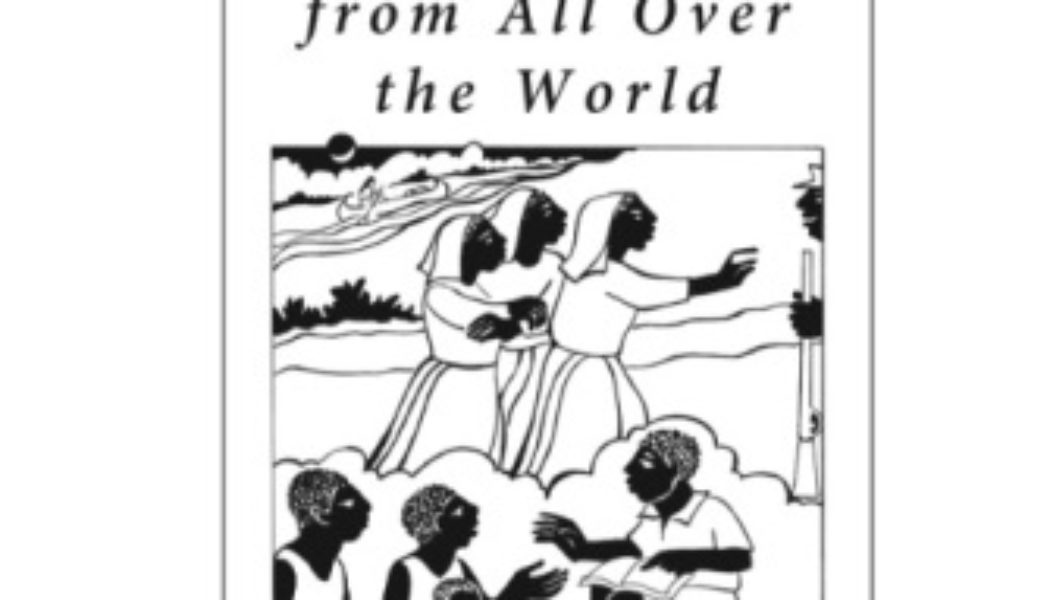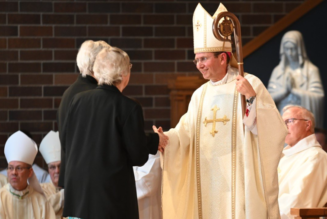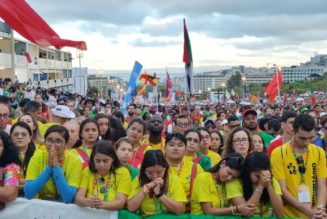
His memorial is today.
Here is a good verions of his life:
One of the patron saints of World Youth Day 2008 in Sydney, Australia, was Bl. Peter To Rot, a native son of Papua New Guinea. A second-generation Catholic during the evangelization of his Southern Pacific island in the early twentieth century, Peter was an exemplary husband, father, and catechist. In 1945 he suffered martyrdom at the hands of Japanese soldiers for his courageous defense of Christian marriage…
…The mission field in Oceania was immense but the missionary priests were few, and so young men were trained as catechists to work with them. Peter threw himself cheerfully into his new daily routine at St. Paul’s College: spiritual exercises, classes, and manual labor. The school had a farm that made it largely self-supporting. When the tropical sun was blazing and some of the students preferred to take it easy, Peter by his example and urging convinced them to get down to work. He was a “joyful companion” who often put an end to quarrels with his good-natured joking, although he learned to refrain from humor at the expense of the instructors. Through frequent Confession, daily Communion, and the Rosary, he and his fellow students fought temptations, increased their faith, and became mature, apostolic Christian men.
Peter To Rot received from the bishop his catechist’s cross in 1934 and was sent back to his native village to help the pastor, Fr. Laufer. He taught catechism classes to the children of Rakunai, instructed adults in the faith and led prayer meetings. He encouraged attendance at Sunday Mass, counseled sinners and helped them prepare for Confession. He zealously combated sorcery, which was practiced by many of the people, even some who were nominally Christian.
In 1936 Peter To Rot married Paula Ia Varpit, a young woman from a neighboring village. Theirs was a model Christian marriage. He showed great respect for his wife and prayed with her every morning and evening. He was very devoted to his children and spent as much time with them as possible.
A Time of Trial
During World War II, the Japanese invaded New Guinea in 1942 and immediately put all the priests and religious into concentration camps. Being a layman, Peter was able to remain in Rakunai. He took on many new responsibilities, leading Sunday prayer and exhorting the faithful to persevere, witnessing marriages, baptizing newborns, and presiding at funerals. One missionary priest who had escaped arrest lived in the forest; Peter brought villagers to him in secret so that they could receive the sacraments.
Although the Japanese did not outlaw all Catholic practices at first, they soon began to pillage and destroy the churches. To Rot had to build a wooden chapel in the bush and devise underground hiding places for the sacred vessels. He carried on his apostolic work cautiously, visiting Christians at night because of the many spies. He often traveled to Vunapopé, a distant village, where a priest gave him the Blessed Sacrament. By special permission of the bishop, To Rot brought Communion to the sick and dying.
Exploiting divisions among the people in New Guinea, the Japanese reintroduced polygamy to win over the support of several local chiefs. They planned thereby to counteract “Western” influence on the native population. Because of sensuality or fear of reprisals, many men took a second wife.
Peter To Rot, as a catechist, was obliged to speak up. “I will never say enough to the Christians about the dignity and the great importance of the Sacrament of Marriage,” he declared. He even took a stand against his own brother Joseph, who was publicly advocating a return to the practice of polygamy. Another brother, Tatamai, remarried and denounced Peter to the Japanese authorities. Paula feared that her husband’s determination would result in harm to their family, but Peter replied, “If I must die, that is good, because I will die for the reign of God over our people.”
And then the homily on the occasion of his beatification by Pope John Paul II, in 1999:
3. Blessed Peter understood the value of suffering. Inspired by his faith in Christ, he was a devoted husband, a loving father and a dedicated catechist known for his kindness, gentleness and compassion. Daily Mass and Holy Communion, and frequent visits to our Lord in the Blessed Sacrament, sustained him, gave him wisdom to counsel the disheartened, and courage to persevere until death. In order to be an effective evangelizer, Peter To Rot studied hard and sought advice from wise and holy “big men”. Most of all he prayed – for himself, for his family, for his people, for the Church. His witness to the Gospel inspired others, in very difficult situations, because he lived his Christian life so purely and joyfully. Without being aware of it, he was preparing throughout his life for his greatest offering: by dying daily to himself, he walked with his Lord on the road which leads to Calvary (Cf. Mt. 10: 38-39).
4. During times of persecution the faith of individuals and communities is “tested by fire” (1Pt. 1: 7). But Christ tells us that there is no reason to be afraid. Those persecuted for their faith will be more eloquent than ever: “it is not you who will be speaking; the Spirit of your Father will be speaking in you” (Mt. 10: 20). So it was for Blessed Peter To Rot. When the village of Rakunai was occupied during the Second World War and after the heroic missionary priests were imprisoned, he assumed responsibility for the spiritual life of the villagers. Not only did he continue to instruct the faithful and visit the sick, he also baptized, assisted at marriages and led people in prayer.
When the authorities legalized and encouraged polygamy, Blessed Peter knew it to be against Christian principles and firmly denounced this practice. Because the Spirit of God dwelt in him, he fearlessly proclaimed the truth about the sanctity of marriage. He refused to take the “easy way” (Cf. ibid. 7: 13) of moral compromise. “I have to fulfil my duty as a Church witness to Jesus Christ”, he explained. Fear of suffering and death did not deter him. During his final imprisonment Peter To Rot was serene, even joyful. He told people that he was ready to die for the faith and for his people.
5. On the day of his death, Blessed Peter asked his wife to bring him his catechist’s crucifix. It accompanied him to the end. Condemned without trial, he suffered his martyrdom calmly. Following in the footsteps of his Master, the “Lamb of God who takes away the sin of the world” (Jn.1: 29), he too was “led like a lamb to the slaughter” (Cf. Is. 53: 7). And yet this “grain of wheat” which fell silently into the earth (Cf. Jn. 12: 24) has produced a harvest of blessings for the Church in Papua New Guinea!
He’s included in the Loyola Kids’ Book of Saints in the section, “Saints are People Who Come From All Over the World.” You can click on the individual images for a larger, more readable version. I include just the end of the entry because that’s what’s available online.











